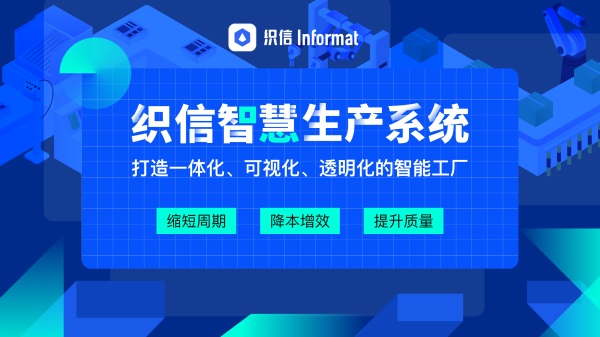设计生产的软件叫什么英文

设计生产的软件通常被称为CAD(Computer-Aided Design)、CAM(Computer-Aided Manufacturing)、PLM(Product Lifecycle Management)。 CAD是用于创建详细设计和技术文档的软件,它帮助设计师通过计算机生成精确的图纸和模型;CAM则用于将这些设计转化为实际的制造过程,确保生产的每一步都符合设计规格;PLM软件则是用于管理产品从概念到退役的整个生命周期。例如,Autodesk的AutoCAD是一款广泛使用的CAD软件,它提供了强大的设计和绘图工具,帮助工程师和设计师高效地创建复杂的工程图和3D模型。

一、CAD:计算机辅助设计
CAD(Computer-Aided Design)是设计生产过程中最基础的软件工具之一。它允许设计师和工程师在计算机上创建二维和三维的模型和图纸。CAD软件提供了广泛的工具和功能,用于精确绘制、建模和分析设计方案。常见的CAD软件包括AutoCAD、SolidWorks和CATIA等。
CAD的主要功能包括:
- 绘图和建模工具:CAD软件提供了各种绘图和建模工具,可以创建从简单的二维图纸到复杂的三维模型。工具包括线条、圆、矩形、三维实体建模等。
- 参数化设计:这允许设计师创建基于参数的模型,使得设计更具灵活性和可修改性。参数化设计工具可以自动更新设计中的所有相关部分,节省了大量时间和精力。
- 仿真和分析:许多CAD软件还包括有限元分析(FEA)和计算流体动力学(CFD)等仿真工具,帮助设计师在制造之前验证和优化设计。
- 协作工具:现代CAD软件通常集成了协作功能,允许多个设计师同时在同一个项目上工作,提高了团队的工作效率。
CAD软件的应用非常广泛,几乎涵盖了所有的工程领域,如机械设计、建筑设计、电气设计等。它不仅提高了设计的精度和效率,还减少了物理原型的需求,节省了资源和成本。
二、CAM:计算机辅助制造
CAM(Computer-Aided Manufacturing)软件用于将CAD设计转化为实际的制造过程。CAM软件通过生成数控代码(G-code)来控制数控机床(CNC),实现自动化生产。常见的CAM软件包括Mastercam、Fusion 360和NX CAM等。
CAM的主要功能包括:
- 数控编程:CAM软件生成的数控代码用于控制机床的运动路径、切削速度和进给速度等,以实现精确的加工。
- 加工仿真:在实际加工之前,CAM软件可以进行加工仿真,以检测潜在的问题和优化加工路径,确保加工过程顺利进行。
- 刀具管理:CAM软件提供了刀具库和刀具路径管理功能,可以优化刀具的使用,延长刀具寿命并提高加工效率。
- 后处理器:后处理器将CAM软件生成的中性代码转换为特定机床的数控代码,确保代码与机床兼容。
CAM软件在制造业中起到了关键作用,通过自动化编程和加工仿真,提高了生产效率和产品质量,减少了人工干预和出错几率。
三、PLM:产品生命周期管理
PLM(Product Lifecycle Management)软件用于管理产品从概念设计到退役的整个生命周期。PLM系统集成了所有与产品相关的信息和流程,帮助企业高效地管理产品开发、制造、维护和退役等阶段。常见的PLM软件包括Siemens PLM、PTC Windchill和Dassault Systèmes ENOVIA等。
PLM的主要功能包括:
- 数据管理:PLM系统集中管理产品数据,包括设计图纸、BOM(物料清单)、规格书等,确保数据的一致性和可追溯性。
- 流程管理:PLM系统定义和管理产品开发和制造流程,确保各个阶段的工作按照规定的步骤和时间表进行。
- 协同工作:PLM系统提供了协同工作平台,允许跨部门、跨地域的团队共同参与产品开发,提高了团队的协作效率。
- 变更管理:PLM系统提供了变更管理工具,用于跟踪和管理产品设计和制造过程中的变更,确保变更的可控性和可追溯性。
- 项目管理:PLM系统集成了项目管理功能,可以规划和跟踪项目的进度、资源和成本,确保项目按时、按预算完成。
PLM系统在现代制造业中扮演着至关重要的角色,帮助企业优化产品开发和制造流程,提高了产品质量和市场响应速度,降低了生产成本和时间。
四、ERP:企业资源计划
ERP(Enterprise Resource Planning)软件用于整合企业的各项资源和业务流程。ERP系统帮助企业优化资源配置、提高运营效率和管理决策能力。常见的ERP软件包括SAP ERP、Oracle ERP和Microsoft Dynamics等。
ERP的主要功能包括:
- 财务管理:ERP系统提供了财务管理工具,可以实时跟踪和管理企业的财务状况,包括会计、预算、现金流和财务报表等。
- 供应链管理:ERP系统优化供应链的各个环节,包括采购、库存、物流和供应商管理,提高了供应链的效率和响应速度。
- 生产管理:ERP系统提供了生产计划、生产调度和车间管理工具,帮助企业优化生产流程,提高生产效率和产品质量。
- 人力资源管理:ERP系统集成人力资源管理功能,包括员工招聘、培训、绩效考核和薪酬管理等,帮助企业有效管理人力资源。
- 客户关系管理:ERP系统集成了客户关系管理(CRM)工具,可以跟踪和管理客户信息、销售机会和售后服务,提高了客户满意度和忠诚度。
ERP系统通过整合企业的各项资源和业务流程,提高了企业的运营效率和管理决策能力,使企业能够更好地应对市场变化和竞争压力。
五、MES:制造执行系统
MES(Manufacturing Execution System)软件用于管理和控制车间的生产活动。MES系统实时监控生产过程,优化生产计划和资源配置,提高生产效率和产品质量。常见的MES软件包括Siemens MES、GE Digital MES和Rockwell Automation MES等。
MES的主要功能包括:
- 生产计划和调度:MES系统提供了生产计划和调度工具,可以优化生产任务的分配和排程,提高生产效率和资源利用率。
- 车间管理:MES系统实时监控车间的生产活动,包括工艺参数、设备状态和生产进度等,确保生产过程的顺利进行。
- 质量管理:MES系统集成了质量管理工具,可以实时检测和分析生产过程中的质量问题,确保产品符合质量标准。
- 物料管理:MES系统提供了物料管理功能,可以实时跟踪和管理生产过程中使用的物料,确保物料供应的及时性和准确性。
- 数据采集和分析:MES系统实时采集生产过程中的数据,并进行分析和报告,帮助企业优化生产流程和决策。
MES系统在制造业中起到了关键作用,通过实时监控和优化生产过程,提高了生产效率和产品质量,减少了生产成本和时间。
六、SCADA:数据采集与监视控制系统
SCADA(Supervisory Control and Data Acquisition)软件用于实时监控和控制工业过程。SCADA系统采集和分析生产过程中的数据,提供实时监控和远程控制功能,提高生产过程的安全性和效率。常见的SCADA软件包括Wonderware、GE iFIX和Siemens WinCC等。
SCADA的主要功能包括:
- 数据采集:SCADA系统实时采集生产过程中的数据,包括温度、压力、流量和设备状态等,确保数据的准确性和及时性。
- 监控和报警:SCADA系统实时监控生产过程中的关键参数,并在参数超出设定范围时发出报警,确保生产过程的安全性和稳定性。
- 远程控制:SCADA系统提供了远程控制功能,可以实时调整和控制生产过程中的设备和参数,提高生产过程的灵活性和响应速度。
- 数据分析和报告:SCADA系统对采集的数据进行分析和报告,帮助企业优化生产流程和决策,提高生产效率和产品质量。
- 集成和互操作性:SCADA系统可以与其他工业自动化系统(如MES、ERP等)集成,实现数据和信息的共享和互操作,优化企业的整体运营。
SCADA系统在工业自动化中扮演着重要角色,通过实时监控和控制生产过程,提高了生产效率和安全性,减少了生产成本和时间。
七、DNC:分布式数控系统
DNC(Distributed Numerical Control)系统用于管理和控制多个数控机床的网络。DNC系统通过网络连接和控制多个数控机床,实现数据和程序的集中管理和传输,提高生产效率和管理水平。常见的DNC软件包括CIMCO DNC、Predator DNC和NCLink等。
DNC的主要功能包括:
- 程序管理:DNC系统集中管理数控程序,可以方便地上传、下载和修改数控程序,提高了数控程序的管理效率和安全性。
- 设备监控:DNC系统实时监控数控机床的状态和运行情况,提供设备故障报警和维护提醒功能,确保设备的正常运行和生产效率。
- 数据传输:DNC系统通过网络连接数控机床,实现数控程序和数据的快速传输和共享,提高了生产效率和数据的准确性。
- 远程控制:DNC系统提供了远程控制功能,可以实时调整和控制数控机床的运行参数和加工过程,提高了生产过程的灵活性和响应速度。
- 集成和互操作性:DNC系统可以与其他工业自动化系统(如MES、ERP等)集成,实现数据和信息的共享和互操作,优化企业的整体运营。
DNC系统在现代制造业中起到了关键作用,通过网络连接和控制多个数控机床,提高了生产效率和管理水平,减少了生产成本和时间。
八、MRP:物料需求计划
MRP(Material Requirements Planning)软件用于管理和优化生产过程中的物料需求。MRP系统根据生产计划和库存情况,计算和确定物料的需求量和供应时间,确保物料供应的及时性和准确性。常见的MRP软件包括SAP MRP、Oracle MRP和Infor MRP等。
MRP的主要功能包括:
- 需求预测:MRP系统根据历史数据和市场需求,预测未来的物料需求量和供应情况,帮助企业制定合理的采购和生产计划。
- 库存管理:MRP系统实时跟踪和管理库存情况,确保库存水平的合理性和物料供应的及时性,减少库存成本和缺货风险。
- 订单管理:MRP系统提供了订单管理功能,可以根据物料需求和供应情况,自动生成采购订单和生产订单,提高订单处理的效率和准确性。
- 生产计划:MRP系统根据物料需求和生产能力,制定和优化生产计划,确保生产过程的顺利进行和生产目标的实现。
- 数据分析和报告:MRP系统对物料需求和供应情况进行分析和报告,帮助企业优化物料管理和决策,提高生产效率和产品质量。
MRP系统在制造业中起到了关键作用,通过优化物料需求和供应管理,提高了生产效率和产品质量,减少了生产成本和时间。
九、CAPP:计算机辅助工艺规划
CAPP(Computer-Aided Process Planning)软件用于制定和优化生产过程中的工艺路线和工艺参数。CAPP系统根据产品设计和制造要求,生成详细的工艺路线和工艺参数,确保生产过程的高效性和一致性。常见的CAPP软件包括Siemens CAPP、PTC CAPP和Dassault Systèmes CAPP等。
CAPP的主要功能包括:
- 工艺路线设计:CAPP系统根据产品设计和制造要求,生成详细的工艺路线,包括加工顺序、加工方法和加工设备等,确保生产过程的高效性和一致性。
- 工艺参数优化:CAPP系统根据工艺路线和生产条件,优化工艺参数,如切削速度、进给速度和加工深度等,提高加工效率和产品质量。
- 工艺文件管理:CAPP系统集中管理工艺文件,包括工艺卡片、工艺规程和工艺图纸等,确保工艺文件的一致性和可追溯性。
- 工艺仿真:CAPP系统提供了工艺仿真工具,可以在实际加工之前验证和优化工艺路线和工艺参数,减少试验成本和加工风险。
- 数据共享和集成:CAPP系统可以与其他设计和制造系统(如CAD、CAM等)集成,实现数据和信息的共享和互操作,提高工艺规划的效率和准确性。
CAPP系统在制造业中起到了关键作用,通过制定和优化工艺路线和工艺参数,提高了生产效率和产品质量,减少了生产成本和时间。
十、APQP:先进产品质量策划
APQP(Advanced Product Quality Planning)软件用于规划和管理产品开发过程中的质量控制。APQP系统通过系统化的方法,确保产品在开发和生产过程中符合质量要求,减少质量问题和生产风险。常见的APQP软件包括Siemens APQP、PTC APQP和Dassault Systèmes APQP等。
APQP的主要功能包括:
- 质量策划:APQP系统根据产品设计和制造要求,制定详细的质量策划,包括质量目标、质量标准和质量控制计划等,确保产品符合质量要求。
- 过程控制:APQP系统实时监控和控制生产过程中的质量参数,提供质量问题报警和处理功能,确保生产过程的稳定性和一致性。
- 质量审核:APQP系统提供了质量审核工具,可以定期审核和评估产品和生产过程的质量,确保质量管理体系的有效性和持续改进。
- 数据分析和报告:APQP系统对质量数据进行分析和报告,帮助企业识别和解决质量问题,优化质量管理和决策。
- 供应商管理:APQP系统集成了供应商管理功能,可以跟踪和评估供应商的质量绩效,确保供应商提供的物料和服务符合质量要求。
APQP系统在制造业中起到了关键作用,通过系统化的质量策划和控制,提高了产品质量和生产效率,减少了质量问题和生产风险。
相关问答FAQs:
在软件设计和开发领域,有多种术语用来描述不同阶段和类型的软件生产。以下是一些常见的术语和解释:
1. What is Software Design?
Software design refers to the process of defining the architecture, components, interfaces, and other characteristics of a system or application. It involves creating a blueprint or plan that guides the development team in implementing the software. The design phase focuses on transforming requirements into a structured solution that can be effectively implemented.
2. What is Software Development?
Software development encompasses the entire process of creating software applications. It includes everything from initial conception and planning through to coding, testing, deployment, and maintenance. Developers write code based on the software design to build functional software products that meet specific user needs or business requirements.
3. What is Software Engineering?
Software engineering is a systematic approach to the development, operation, and maintenance of software. It involves applying engineering principles and methodologies to software development processes to ensure quality, efficiency, and reliability. Software engineers use techniques like requirements analysis, design, testing, and debugging to manage the complexity of software systems and deliver robust solutions.
4. What is Agile Software Development?
Agile software development is an iterative and incremental approach to software development. It emphasizes flexibility, customer collaboration, and rapid responses to change. Agile methodologies, such as Scrum and Kanban, prioritize delivering working software in short cycles (iterations or sprints) rather than following a linear development process. This approach allows teams to respond to feedback and evolving requirements more effectively.
5. What is Waterfall Software Development?
Waterfall software development is a linear and sequential approach to software development. It consists of distinct phases (requirements gathering, design, implementation, testing, deployment, and maintenance) that must be completed in order, with each phase acting as a foundation for the next. Waterfall is known for its structured and predictable nature but can be less adaptable to changes compared to agile methodologies.
6. What is DevOps?
DevOps is a set of practices that combines software development (Dev) and IT operations (Ops) to shorten the systems development life cycle while delivering high-quality software. It emphasizes collaboration, automation, and continuous integration and delivery (CI/CD). DevOps aims to increase the speed, efficiency, and reliability of software development and deployment processes by breaking down silos between development and operations teams.
7. What is Software Prototyping?
Software prototyping involves creating incomplete versions of a software application in the early stages of development. Prototypes are used to visualize and demonstrate the core functionality of the software, gather feedback from stakeholders, and validate design decisions before proceeding with full-scale development. Prototyping can help identify requirements, reduce risks, and improve the overall quality of the final software product.
8. What is Software Testing?
Software testing is the process of evaluating a software application to identify defects or bugs. It involves executing the software under controlled conditions and comparing expected outcomes with actual results. Testing ensures that the software meets specified requirements, functions correctly, and is reliable and secure. Types of testing include unit testing, integration testing, system testing, and acceptance testing.
9. What is Version Control?
Version control (or source control) is a system that tracks and manages changes to software code. It allows multiple developers to work on the same codebase simultaneously, coordinating their changes and maintaining a history of revisions. Version control systems (such as Git, SVN, and Mercurial) enable collaboration, facilitate code review, and provide mechanisms for reverting to previous versions or branching code for experimental features.
10. What is Software Documentation?
Software documentation refers to the written information about a software product, its features, functionality, architecture, and usage. It includes technical specifications, user manuals, API documentation, design documents, and release notes. Good documentation is essential for developers, testers, users, and stakeholders to understand and effectively use the software, troubleshoot issues, and support ongoing development and maintenance.
这些术语和概念涵盖了软件设计和开发过程中的关键方面,帮助理解和实施各种类型和规模的软件项目。
版权声明:本文内容由网络用户投稿,版权归原作者所有,本站不拥有其著作权,亦不承担相应法律责任。如果您发现本站中有涉嫌抄袭或描述失实的内容,请联系邮箱:hopper@cornerstone365.cn 处理,核实后本网站将在24小时内删除。
最近更新
立即开启你的数字化管理
用心为每一位用户提供专业的数字化解决方案及业务咨询




